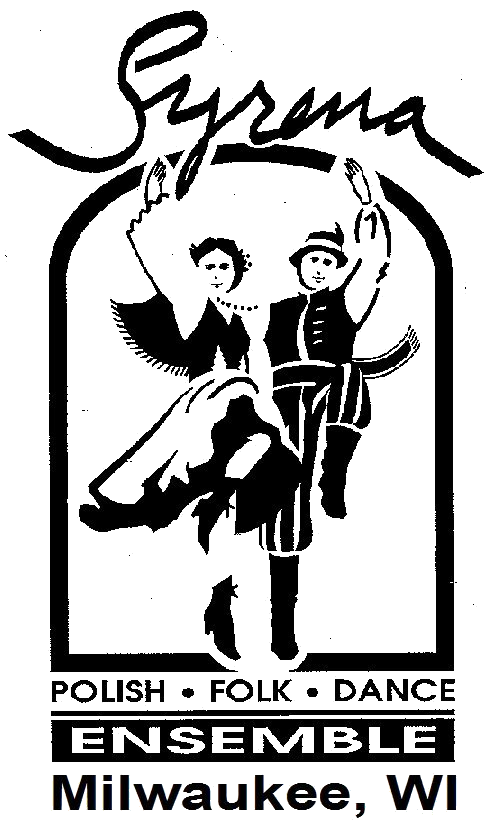Kurpie
From the rich primeval forests of Northeastern Poland comes a robust and rousing suite of dances. Beginning with the dance “Konik” (the horse), men carry in a horse and rider completely constructed from the dancers themselves. Konik breaks apart into a line of men who then proceed to mimic the characteristics of a row of ducks. Numerous flirtatious and vibrant dances follow, all climaxed by the rousing “Powolniak” dance which fills the stage with swirling dancers.
History of Kurpiowski Costume
The territory which makes up the latter-day region of Kurpie was for many centuries a great forest In fact, the two major regions of Kurpie, Puszcza Zielona and Puszcza Biala mean “Green Wilderness” and “White Wilderness.” People settled here only in the early part of the sixteenth century, mostly from Mazowsze to the west. Nevertheless, in the last four hundred years, the foresters, hunters and collectors of wild honey of Kurpie have developed a rich and lively folklore. Their textiles are considered to be the most beautiful and sophisticated in all of Poland. Although they are forest dwellers their dances have some of the same energetic movements as the mountaineers-perhaps because both have strong legs from hiking and climbing!
There are significant differences between the costumes of the Puszcza Biala and Puszcza Zielona areas. We illustrate the latter, more northerly, region. The men wear long brown or russet-gray coats tied about the waist with a red sashes. Underneath are white trousers wrapped round with thongs from the leather moccasins (kurpie) worn in the forest. Their shirts are of white linen. Sometimes a short red jacket is worn. In the north men have dark brown top hats while in the south small black caps are worn.
The northern women wear red skirts (in the south they’re green) and over this, green vests (gorsety) trimmed in red and edged with crocheted lace. The white linen blouses have little ornamentation although the women always wear necklaces made from local amber. A very archaic element are the black velvet hats (czolka) decorated with flowers or ribbons. In southern Kurpie we see more elaborate embroidery and needlework and a different style of hat.
